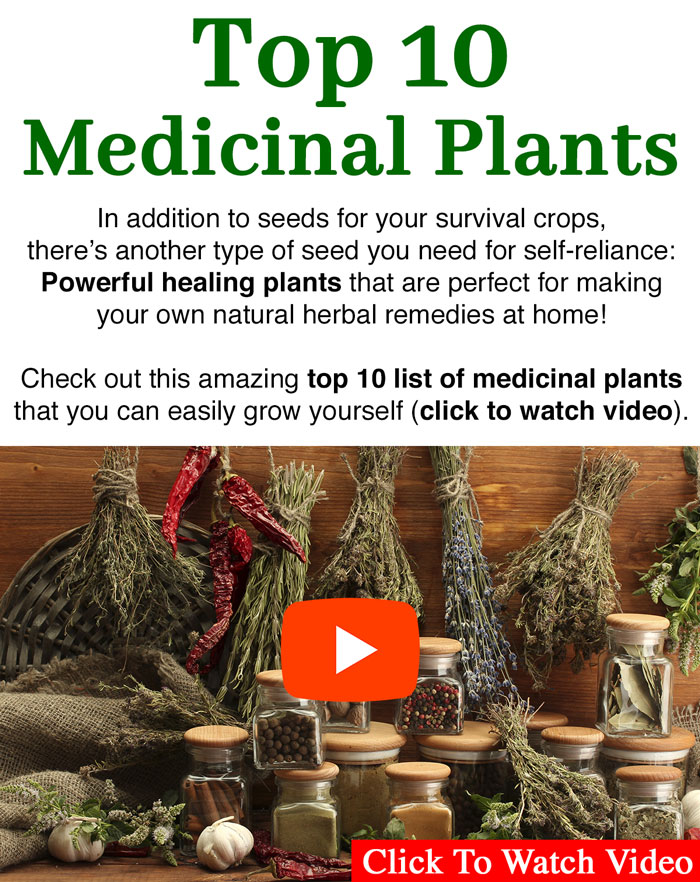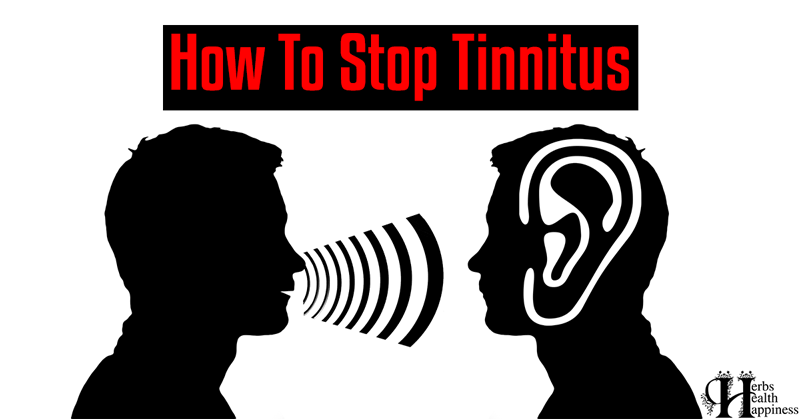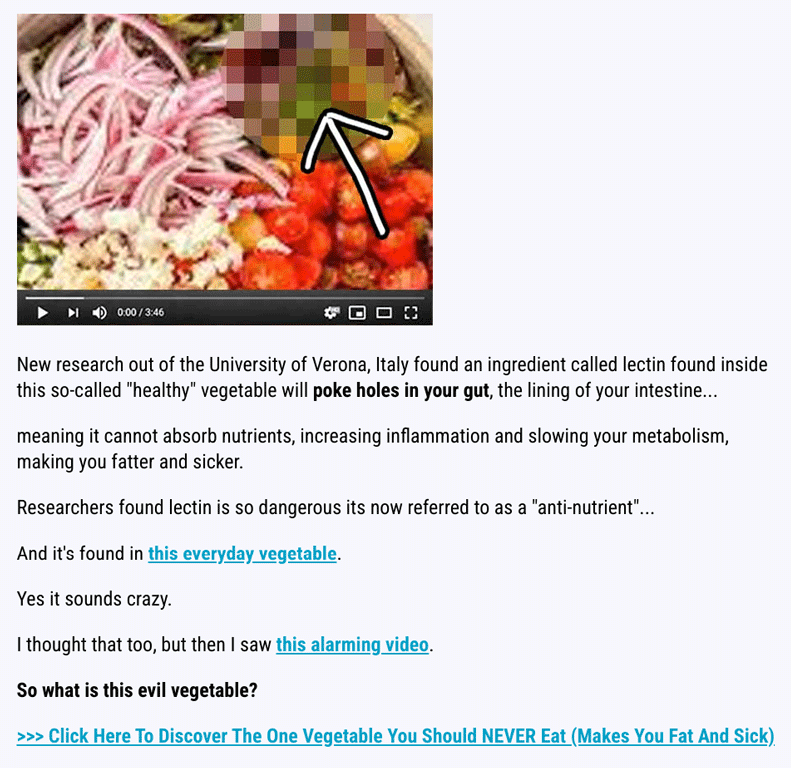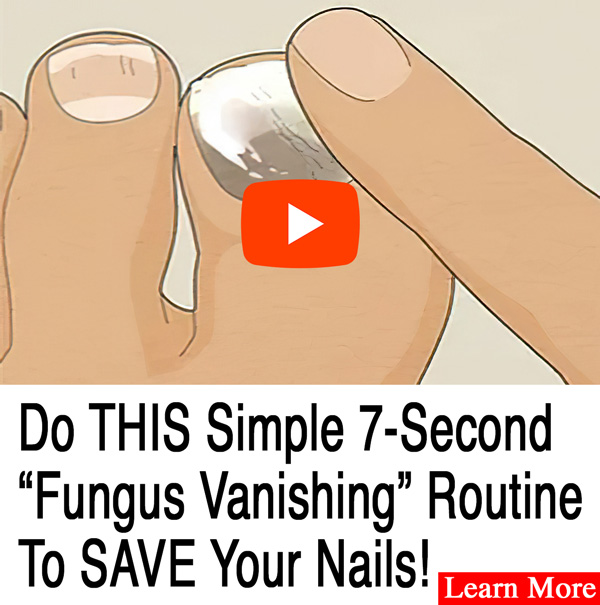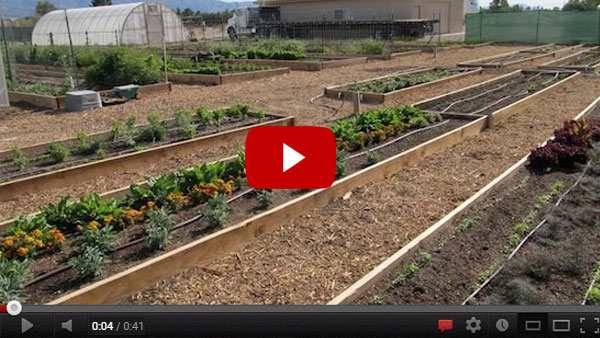This website is not medical advice. Posts may contain affiliate links from which I earn commissions at no additional cost to you.
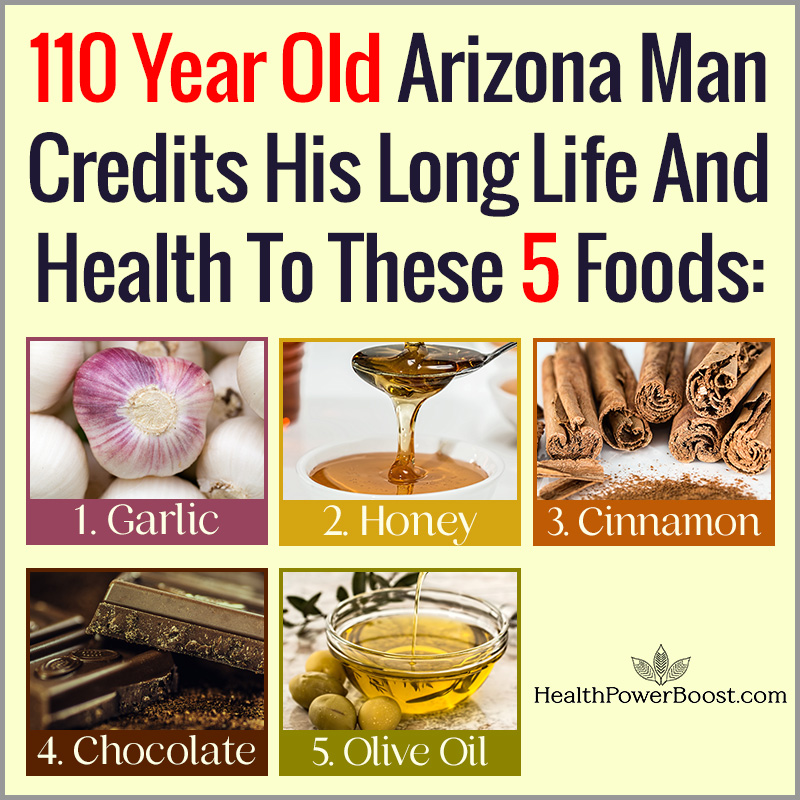
110 Year Old Arizona Man Credits His Long Life And Health To These 5 Foods Graphic © healthpowerboost.com. Background photos: Pixabay (PD)
While several factors impact our lifespan and healthspan – from family history to environment – food plays a key role. What you eat significantly impacts the complex processes in your cells and influences your disease risk. According to a global study published in The Lancet, poor diet was responsible for 255 million disability-adjusted life years (DALYs) and 11 million deaths in 2017. [1]

On the other side of the spectrum, a healthy diet can offer powerful medicinal properties to prevent or even reverse diseases—all factors that work to boost your longevity. [2][3][4]
“The food you eat can be either the safest and most powerful form of medicine or the slowest form of poison.”- Ann Wigmore
So, what should we eat and what should we avoid?
We turn to the interesting dietary advice of the late Bernando LaPallo — a “supercentenarian” (110+) who lived past his 114th birthday. Supercentenarians are noted not only for their extreme longevity but for living a life free of major diseases until shortly before the end of their lives.
In a video by ABC15 Arizona, when Mr. LaPallo was 110 years old, he credits diet for his longevity. “People ask me what do you do to stay so young. I say, ‘Well, you’ve heard the old saying, you are what you eat’,” LaPallo explained.
The Life of Bernando LaPallo

The unusual life of Bernando LaPallo began in 1901 in Brazil. This was a time when horses and buggies were the preferred means of transportation, and the first powered aircraft was yet to take flight.
From a young age, Bernando’s father instilled lifelong lessons on how to eat well and live healthily. On his Age Less, Live More website, Mr. LaPallo recounts all the advice and life-enhancing activities that allowed his father to live 98 years—and how he applied the teachings to live even longer.
My LaPallo developed a passion for culinary and healing arts that took him down an interesting career path as a 5-star chef, massage therapist, herbologist, and reflexologist. His inspiring journey ended on December 19, 2015 (a few months after his 114th birthday) at his home in Texas after his heart stopped.
The Science Behind Bernando’s Longevity Foods
Interestingly, Bernando claimed to have never been sick in his entire life. How is that even possible? According to the supercentenarian, the secret lies in lifestyle and dietary habits.
He mostly ate organic fruits and vegetables, kept his mind engaged with puzzles, games, and reading, took a walk every morning, stayed away from processed foods, and worked on his spiritual well-being.
In particular, he singled out 5 foods that were a staple in his daily dietary ritual—cinnamon, garlic, olive oil, honey, and chocolate. But what does science say about Mr. LaPallo’s medicine chest?

1. Garlic
Garlic (Allium sativum L.) is a widely recognized culinary and medicinal herb known for its numerous health benefits. Organic garlic was a mainstay in Bernando’s daily diet, from smoothies to sauteing his greens. He felt it was a natural immune booster – and research confirms his beliefs. Several studies suggest that compounds in garlic have anti-inflammatory and immunomodulation effects that help protect you from disease. This is especially important for older people – with infectious diseases accounting for a significant number of emergency department visits and deaths in the age group.
Garlic has also been shown to help reduce blood pressure and fight oxidative damage, which contribute to aging.
Key Nutritional Components Of Garlic:
Allicin: Allicin is a sulfur-containing compound that forms when garlic is crushed or chopped. It is known for its antimicrobial properties and is believed to be responsible for many of garlic’s health benefits.
Sulfur Compounds: Garlic contains various sulfur compounds, including diallyl trisulfide, S-allyl-cysteine, and S-allylmercaptocysteine. These compounds have been shown to have cardioprotective, anticancer, and anti-inflammatory effects.
Vitamins and Minerals: Garlic is a source of vitamins C and B6, as well as minerals like manganese and selenium. These nutrients contribute to its antioxidant properties.
Health Benefits Of Garlic:
Cardiovascular Health: Garlic has been shown to have a positive impact on heart health. It can reduce the risk of atherosclerosis, hypertension, and hyperlipidemia. Garlic’s ability to lower total cholesterol and LDL (bad cholesterol) levels, while not affecting HDL (good cholesterol), makes it beneficial for heart health.
Antimicrobial Properties: Allicin and other sulfur compounds in garlic exhibit antimicrobial activity against bacteria, viruses, fungi, and parasites. This makes garlic a natural option for boosting immunity and fighting infections.
Cancer Prevention: Some studies suggest that garlic has anticancer and chemopreventive properties. Its bioactive compounds may help in reducing the risk of certain types of cancer.
Anti-Inflammatory Effects: Garlic’s sulfur compounds can act as anti-inflammatory agents, which may be beneficial in reducing the symptoms of various inflammatory conditions.
Diabetes Management: Garlic has been found to play a protective and therapeutic role against diabetes by influencing blood sugar regulation.
Bone Health: Consuming garlic could help maintain healthy bones, although more research is needed in this area.
References: [5][6][7][8][9]
2. Raw Honey
Mr. LaPallo used uncooked raw honey as a sweetener and for topical application to help with skin irritations. According to him, honey is “God’s perfect food”. According to research, he was onto something.
High-quality honey is rich in antioxidants that protect cells from oxidative stress. It may also help improve heart function, promote wound healing, improve brain health, and fight bacteria.
Honey, a natural sweetener produced by bees, is renowned not only for its taste but also for its diverse array of nutritional components that contribute to its health benefits. The nutritional benefits of honey are attributed to its complex composition, including polysaccharides, polyphenols, vitamins, minerals, phenolic acids, flavonoids, and enzymes. These components contribute to honey’s antioxidant, antibacterial, cardioprotective, hepatoprotective, and immunomodulatory activities, making it a valuable addition to a healthy diet.
Key Nutritional Components Of Honey:
1. Polysaccharides and Polyphenols: Honey contains various polysaccharides and polyphenols, which are responsible for its antioxidant properties. These compounds play a significant role in combating oxidative stress and reducing the risk of chronic diseases.
2. Vitamins and Minerals: Honey provides a range of vitamins, including vitamin C, and minerals such as magnesium, calcium, and zinc. These nutrients are essential for various bodily functions, including immune system support and bone health.
3. Phenolic Acids and Flavonoids: The presence of phenolic acids and flavonoids in honey contributes to its antibacterial and antioxidant activities. These compounds are crucial in honey’s role in preventing diseases caused by oxidative stress.
4. Enzymes: Honey contains enzymes like diastase and invertase, which aid in sugar metabolism and contribute to its health benefits.
Health Benefits Of Honey:
1. Antioxidant Activity: Honey’s antioxidant properties, attributed to its polyphenols, help protect the body against oxidative stress and inflammation.
2. Antibacterial Properties: The phenolic acids and flavonoids in honey give it antibacterial properties, making it effective in wound healing and skin care.
3. Nutritional Supplementation: Honey’s nutritional composition, including its vitamins and minerals, makes it a beneficial supplement for overall health.
4. Cardioprotective and Hepatoprotective Effects: Honey has been indicated to exhibit cardioprotective and hepatoprotective properties, potentially beneficial in heart and liver health.
5. Immunomodulatory Activities: The nutritional components of honey can modulate the immune system, enhancing its function and providing protective effects.
References: [10][11][12][13][14][15][16][17]
3. Chocolate
Quality raw chocolate is more than a tasty treat; it’s a superhealth food. It’s highly nutritious and a powerful source of antioxidants. According to research, chocolate may reduce heart disease risk, decrease ‘bad’ cholesterol levels, improve brain function, and protect against sun damage.
Phytochemical Composition Of Cacao (the main ingredient in chocolate):
1. Polyphenols: Cacao is a significant source of polyphenols, primarily flavonoids and non-flavonoids. These bioactive compounds are known for their antioxidant and anti-inflammatory activities, contributing to various health benefits.
2. Flavanoids: The major flavonoids in cacao include catechins, epicatechins, and procyanidins. These compounds are associated with improved vascular function and have potential benefits in preventing cancer and managing diabetes by improving endothelial function and reducing oxidative stress.
3. Methylxanthines: Cacao contains methylxanthines like caffeine and theobromine, which are known for their stimulant properties and potential neuroprotective effects.
Nutritional Profile Of Cacao:
1. Macronutrients: Cacao beans are rich in carbohydrates (31%), proteins (11%), fats (54%), and dietary fiber (16%). These nutrients contribute to the overall energy and nutritional value of cacao.
2. Minerals: Cacao is a good source of essential minerals, providing a range of micronutrients necessary for various bodily functions.
3. Antioxidant Activity: The antioxidant properties of cacao are primarily attributed to its high phenolic content. These antioxidants play a crucial role in neutralizing free radicals and reducing oxidative stress in the body.
Cacao Health Benefits:
1. Cardiovascular Health: The flavonoids in cacao contribute to heart health by improving blood flow and reducing the risk of cardiovascular diseases.
2. Neuroprotective Effects: Cacao flavonoids can penetrate and accumulate in brain regions involved in learning and memory, suggesting potential benefits in cognitive functions and neuroprotection.
3. Anti-Cancer Properties: The bioactive compounds in cacao have been shown to inhibit the molecular processes leading to cancer, highlighting its potential as a functional food in cancer prevention.
4. Diabetes Management: Flavanoids in cacao increase insulin sensitivity, which is beneficial in the management of diabetes.
References: [18][19][20][21][22][23][24]
4. Cinnamon (Cinnamomum verum)
Cinnamon is a common spice with an ancient background, dating as far as Ancient Egypt. It’s loaded with powerful antioxidants that surpass other ‘superfoods’, including garlic.
Some potential health benefits of cinnamon include reducing inflammation, reducing blood pressure, protecting against neurogenerative diseases, fighting infections, and protecting against cancer.
A key point to note is that Bernando used ‘true’ cinnamon from Ceylon. This differs from Cassia cinnamon, the cheaper variety you’ll likely find on a store shelf. Cassia cinnamon is widely regarded as less healthful and contains higher amounts of coumarin — a compound that could be harmful in large doses.
Phytochemical Composition of Cinnamon (Cinnamomum verum):
Cinnamon’s health benefits are largely attributed to its diverse phytochemical profile:
1. Cinnamaldehyde: The primary bioactive component, cinnamaldehyde, is known for its distinctive flavor and aroma. It exhibits anti-inflammatory, antitumor, anticancer, and antidiabetic properties.
2. Phenolic Compounds: These compounds, abundant in cinnamon, are recognized for their antioxidant activities, playing a crucial role in mitigating oxidative stress and reducing chronic disease risks.
3. Volatile Oils: Essential oils from cinnamon bark contain bioactive compounds with immunomodulatory, antiviral, antimicrobial, and lipid-lowering effects.
Health Benefits of Cinnamon (Cinnamomum verum):
The synergy of phytochemicals and nutrients in cinnamon offers various health advantages:
1. Antidiabetic Effects: Cinnamon has been shown to positively affect blood sugar levels, making it beneficial for diabetes management.
2. Cardiovascular Health: Its properties in managing cholesterol levels and blood pressure support heart health.
3. Digestive Health: Cinnamon enhances digestion, improves gut microflora activity, and acts as a hepatic stimulant, aiding in bile production and toxin elimination.
4. Immunomodulatory Properties: Its rich antioxidant content bolsters the immune system.
5. Neuroprotective and Anticancer Effects: Cinnamon exhibits neuroprotective properties and potential anticancer benefits.
References: [25][26][27][28][29][30][31][32][33][34][35]
5. Olive Oil
You could easily mistake Mr. LaPallo for a much younger age due to his relatively wrinkle-free skin. He attributed his skin health to a dutiful use of extra virgin oil after a hot shower. Olive oil is rich in several vitamins that benefit the skin. These include vitamins E, K, A, and D. It’s also loaded with powered antioxidants that may prevent premature aging when applied topically. Olive oil also has antibacterial properties that may help fight bacteria on the skin.
Phytochemical Composition Of Olive Oil:
1. Phenolic Compounds: Olive oil is abundant in phenolic compounds, which are primarily responsible for its antioxidant properties. These include hydroxytyrosol, tyrosol, and their secoiridoids such as oleuropein and ligstroside. These compounds are effective in modulating oxidative stress and inflammation, key factors in chronic diseases and aging.
2. Secoiridoids: Secoiridoids in olive oil, like oleocanthal, have shown potential in neuroprotection, particularly against age-associated cognitive decline. They exhibit properties that counteract oxidative stress and neuroinflammation, which are crucial in neurodegenerative processes.
3. Fatty Acids: Olive oil is rich in monounsaturated fatty acids, particularly oleic acid, which contribute to its health benefits. These fatty acids play a role in cardiovascular health and metabolic regulation.
Nutritional Profile Of Olive Oil:
1. Vitamins and Antioxidants: Olive oil contains vitamins E and K, which are potent antioxidants. Vitamin E contributes to the protection of cells from oxidative stress, while vitamin K plays a role in blood clotting and bone health.
2. Healthy Fats: The high content of monounsaturated fats in olive oil is beneficial for heart health. These fats help in lowering bad cholesterol levels and increasing good cholesterol levels.
3. Bioaccessibility of Nutrients: Studies have shown that the bioaccessibility of nutritional and bioactive compounds in olive oil is high. This means that the body can easily absorb these beneficial compounds.
Health Benefits Of Olive Oil:
1. Cardiovascular Health: Olive oil’s anti-inflammatory and antioxidant properties, along with its healthy fat profile, contribute to cardiovascular health. It helps in reducing the risk of heart diseases and stroke.
2. Neuroprotective Effects: Phenolic compounds in olive oil, particularly hydroxytyrosol, have shown potential in protecting against cognitive decline. They may help in reducing the risk of neurodegenerative diseases like Alzheimer’s.
3. Anti-Cancer Properties: The bioactive compounds in olive oil have been linked to a reduced risk of certain types of cancer. This is attributed to their ability to modulate oxidative stress and inflammation.
4. Diabetes Management: Olive oil can play a role in the management of diabetes by improving insulin sensitivity and regulating blood sugar levels.
References: [36][37][38][39][40]
Summary: What Can We Learn from Bernando?
While genetics and environmental factors may impact your longevity, eating and lifestyle habits could be key to living to a ripe old age. The path to a long healthy life is partly in your control – and there’s no time like the present to fuel your body with nutrient-dense, high quality foods; especially those regarded as among the healthiest options.
And remember that there’s more to longevity and graceful aging than just diet. Exercise regularly, avoid toxins, sleep better, and take care of your mental health.
=====================================================
References:
[1] Afshin, A., Sur, P. J., Fay, K. A., Cornaby, L., Ferrara, G., Salama, J. S., … & Murray, C. J. (2019). Health effects of dietary risks in 195 countries, 1990–2017: a systematic analysis for the Global Burden of Disease Study 2017. The Lancet, 393(10184), 1958-1972: https://pubmed.ncbi.nlm.nih.gov/30954305/
[2] Kim, H., Caulfield, L. E., & Rebholz, C. M. (2018). Healthy plant-based diets are associated with lower risk of all- cause mortality in US adults. The Journal of nutrition, 148(4), 624-631: https://pubmed.ncbi.nlm.nih.gov/29659968/
[3] Sanchez, A., Mejia, A., Sanchez, J., Runte, E., Brown-Fraser, S., & Bivens, R. L. (2019). Diets with customary levels of fat from plant origin may reverse coronary artery disease. Medical hypotheses, 122, 103-105: https://pubmed.ncbi.nlm.nih.gov/30593389/
[4] Martinez-Gonzalez, M. A., & Martin-Calvo, N. (2016). Mediterranean diet and life expectancy; beyond olive oil, fruits and vegetables. Current opinion in clinical nutrition and metabolic care, 19(6), 401: https://www.ncbi.nlm.nih.gov/pmc/articles/PMC5902736/
[5] Arreola, R., Quintero-Fabián, S., López-Roa, R. I., Flores-Gutiérrez, E. O., Reyes-Grajeda, J. P., Carrera-Quintanar, L., & Ortuño-Sahagún, D. (2015). Immunomodulation and anti-inflammatory effects of garlic compounds. Journal of immunology research, 2015: https://www.ncbi.nlm.nih.gov/pmc/articles/PMC4417560/
[6] Moutia, M., Habti, N., & Badou, A. (2018). In vitro and in vivo immunomodulator activities of Allium sativum L. Evidence-Based Complementary and Alternative Medicine, 2018: https://www.ncbi.nlm.nih.gov/pmc/articles/PMC6020507/
[7] Goto, T., Yoshida, K., Tsugawa, Y., Camargo Jr, C. A., & Hasegawa, K. (2016). Infectious disease–related emergency department visits of elderly adults in the United States, 2011–2012. Journal of the American Geriatrics Society, 64(1), 31-36: https://pubmed.ncbi.nlm.nih.gov/26696501/
[8] Amagase, H., Petesch, B. L., Matsuura, H., Kasuga, S., & Itakura, Y. (2001). Intake of garlic and its bioactive components. The Journal of nutrition, 131(3), 955S-962S: https://pubmed.ncbi.nlm.nih.gov/11238796/
[9] Ried, K. (2020). Garlic lowers blood pressure in hypertensive subjects, improves arterial stiffness and gut microbiota: A review and meta-analysis. Experimental and Therapeutic Medicine, 19(2), 1472-1478: https://www.ncbi.nlm.nih.gov/pmc/articles/PMC6966103/
[10] Cianciosi, D., Forbes-Hernández, T. Y., Afrin, S., Gasparrini, M., Reboredo-Rodriguez, P., Manna, P. P., … & Battino, M. (2018). Phenolic compounds in honey and their associated health benefits: A review. Molecules, 23(9), 2322: https://www.ncbi.nlm.nih.gov/pmc/articles/PMC6225430/
[11] Zhang, S., Lu, Z., Tian, C., Zhang, Q., Liu, L., Meng, G., … & Niu, K. (2020). Associations between honey consumption and prehypertension in adults aged 40 years and older. Clinical and Experimental Hypertension, 42(5), 420-427: https://pubmed.ncbi.nlm.nih.gov/31760826/
[12] Alam, F., Islam, M. D., Gan, S. H., & Khalil, M. (2014). Honey: a potential therapeutic agent for managing diabetic wounds. Evidence-Based Complementary and Alternative Medicine, 2014: https://www.ncbi.nlm.nih.gov/pmc/articles/PMC4216698/
[13] Samarghandian, S., Farkhondeh, T., & Samini, F. (2017). Honey and health: A review of recent clinical research. Pharmacognosy research, 9(2), 121: https://www.ncbi.nlm.nih.gov/pmc/articles/PMC5424551/
[14] “Composition, Functional Properties and Safety of Honey: A Review” – [Journal of the Science of Food and Agriculture] https://onlinelibrary.wiley.com/doi/10.1002/jsfa.12720
[15] “Comparative analysis of antibacterial and antioxidant activity of three different types of honey” – [Agricultural and Applied Economics Association] https://scindeks-clanci.ceon.rs/data/pdf/0354-9542/2022/0354-95422254115Q.pdf
[16] “Uses and benefits of algae as a nutritional supplement for honey bees” – [Frontiers in Sustainable Food Systems] https://www.frontiersin.org/articles/10.3389/fsufs.2022.1005058/full
[17] “Nutrient Content and pH of Honey Propolis Trigona from Masamba, South Sulawesi Indonesia” – [Journal of Food Science and Technology] https://www.researchgate.net/publication/303890620_Nutrient_Content_and_pH_of_Honey_Propolis_Trigona_from_Masamba_South_Sulawesi_Indonesia
[18] U.S. Department Of Agriculture (FoodData Central): https://fdc.nal.usda.gov/fdc-app.html#/food- details/170273/nutrients
[19] Ludovici, V., Barthelmes, J., Nägele, M. P., Enseleit, F., Ferri, C., Flammer, A. J., … & Sudano, I. (2017). Cocoa, blood pressure, and vascular function. Frontiers in Nutrition, 4, 36: https://www.ncbi.nlm.nih.gov/pmc/articles/PMC5539137/
[20] Petyaev, I. M., Dovgalevsky, P. Y., Chalyk, N. E., Klochkov, V., & Kyle, N. H. (2014). Reduction in blood pressure and serum lipids by lycosome formulation of dark chocolate and lycopene in prehypertension. Food science & nutrition, 2(6), 744-750: https://www.ncbi.nlm.nih.gov/pmc/articles/PMC4256580/
[21] Martín, M. A., Goya, L., & de Pascual-Teresa, S. (2020). Effect of cocoa and cocoa products on cognitive performance in young adults. Nutrients, 12(12), 3691: https://www.ncbi.nlm.nih.gov/pmc/articles/PMC7760676/
[22] Martin, M. Á., & Ramos, S. (2021). Impact of cocoa flavanols on human health. Food and Chemical Toxicology, 151, 112121: https://www.sciencedirect.com/science/article/pii/S027869152100154X
[23] “Health benefits of bioactive compounds from cocoa (Theobroma cacao)” – https://arccjournals.com/journal/agricultural-reviews/R-1851
[24] “Exploring the Nutritional Composition and Bioactive Compounds in Different Cocoa Powders” – https://www.mdpi.com/2076-3921/12/3/716
[25] Shan, B., Cai, Y. Z., Sun, M., & Corke, H. (2005). Antioxidant capacity of 26 spice extracts and characterization of their phenolic constituents. Journal of agricultural and food chemistry, 53(20), 7749-7759: https://pubmed.ncbi.nlm.nih.gov/16190627/
[26] Gunawardena, D., Karunaweera, N., Lee, S., van Der Kooy, F., Harman, D. G., Raju, R., … & Münch, G. (2015). Anti-inflammatory activity of cinnamon (C. zeylanicum and C. cassia) extracts–identification of E-cinnamaldehyde and o-methoxy cinnamaldehyde as the most potent bioactive compounds. Food & function, 6(3), 910-919: https://pubmed.ncbi.nlm.nih.gov/25629927/
[27] Rao, P. V., & Gan, S. H. (2014). Cinnamon: a multifaceted medicinal plant. Evidence-Based Complementary and Alternative Medicine, 2014: https://www.ncbi.nlm.nih.gov/pmc/articles/PMC4003790/
[28] Khasnavis, S., & Pahan, K. (2014). Cinnamon treatment upregulates neuroprotective proteins Parkin and DJ-1 and protects dopaminergic neurons in a mouse model of Parkinson’s disease. Journal of Neuroimmune Pharmacology, 9(4), 569-581: https://pubmed.ncbi.nlm.nih.gov/24946862/
[29] Singh, H. B., Srivastava, M., Singh, A. B., & Srivastava, A. K. (1995). Cinnamon bark oil, a potent fungitoxicant against fungi causing respiratory tract mycoses. Allergy, 50(12), 995-999: https://pubmed.ncbi.nlm.nih.gov/8834832/
[30] Lu, J., Zhang, K., Nam, S., Anderson, R. A., Jove, R., & Wen, W. (2010). Novel angiogenesis inhibitory activity in cinnamon extract blocks VEGFR2 kinase and downstream signaling. Carcinogenesis, 31(3), 481-488: https://www.ncbi.nlm.nih.gov/pmc/articles/PMC3105590/
[31] Chen, P., Sun, J., & Ford, P. (2014). Differentiation of the four major species of cinnamons (C. burmannii, C. verum, C. cassia, and C. loureiroi) using a flow injection mass spectrometric (FIMS) fingerprinting method. Journal of agricultural and food chemistry, 62(12), 2516-2521: https://pubmed.ncbi.nlm.nih.gov/24628250/
[32] Wang, Y. H., Avula, B., Nanayakkara, N. D., Zhao, J., & Khan, I. A. (2013). Cassia cinnamon as a source of coumarin in cinnamon-flavored food and food supplements in the United States. Journal of agricultural and food chemistry, 61(18), 4470-4476: https://pubmed.ncbi.nlm.nih.gov/23627682/
[33] “Beneficial Impacts and Phytocomponents of Cinnamomum in Indonesia: A Review” – https://dx.doi.org/10.25303/1710rjbt1140123
[34] “Medicinal and Nutritional Perspective of Cinnamon: A Mini-review” – https://dx.doi.org/10.9734/ejmp/2020/v31i330218
[35] “Therapeutic Potential of Cinnamomum Zeylanicum Extract to Mitigate Hyperglycemia” – https://dx.doi.org/10.21649/AKEMU.V23I2.1586
[36] Budiyanto, A., Ahmed, N. U., Wu, A., Bito, T., Nikaido, O., Osawa, T., … & Ichihashi, M. (2000). Protective effect of topically applied olive oil against photocarcinogenesis following UVB exposure of mice. Carcinogenesis, 21(11), 2085-2090: https://academic.oup.com/carcin/article/21/11/2085/2908770
[37] Verallo-Rowell, V. M., Dillague, K. M., & Syah-Tjundawan, B. S. (2008). Novel antibacterial and emollient effects of coconut and virgin olive oils in adult atopic dermatitis. Dermatitis, 19(6), 308-315: https://pubmed.ncbi.nlm.nih.gov/19134433/
[38] “Olive Oil Phenolic Compounds’ Activity against Age-Associated Cognitive Decline: Clinical and Experimental Evidence” – https://www.mdpi.com/2076-3921/12/7/1472
[39] “Virgin Olive Oil, A Rich Source of Functional Bioactive Compounds in the Promotion of Human Health: An Overview” – https://journalejnfs.com/index.php/EJNFS/article/view/673
[40] “Study of the In Vitro Digestion of Olive Oil Enriched or Not with Antioxidant Phenolic Compounds. Relationships between Bioaccessibility of Main Components of Different Oils and Their Composition” – https://www.mdpi.com/2076-3921/9/6/543
😳 What Tinnitus Does To Your Brain Cells (And How To Stop It)
After 47 years of studies and countless brain scans done on more than 2,400 tinnitus patients, scientists at the MIT Institute found that in a shocking 96% of cases, tinnitus was actually shrinking their brain cells.
As it turns out, tinnitus and brain health are strongly linked.
Even more interesting: The reason why top army officials are not deaf after decades of hearing machine guns, bombs going off and helicopter noises…
Is because they are using something called "the wire method", a simple protocol inspired by a classified surgery on deaf people from the 1950s...
★ Does Your Salad Contain This Vegetable?
★ Try This 100% Natural Essential Oil Mix For Nail Fungus:
★ I Can't Help Showing This Off:
If you haven't heard of Claude Davis yet do yourself a huge favor and watch this video.
One of the smartest guys I ever had the pleasure of meeting, Claude set-up a unique prepping system that changed his life forever.
I already tried it myself and let me tell... you I was completely blown away... His surprising tactics could make your life easier and give you the peace of mind you deserve.
Don't just take my word for it... watch his short video and decide for yourself.


